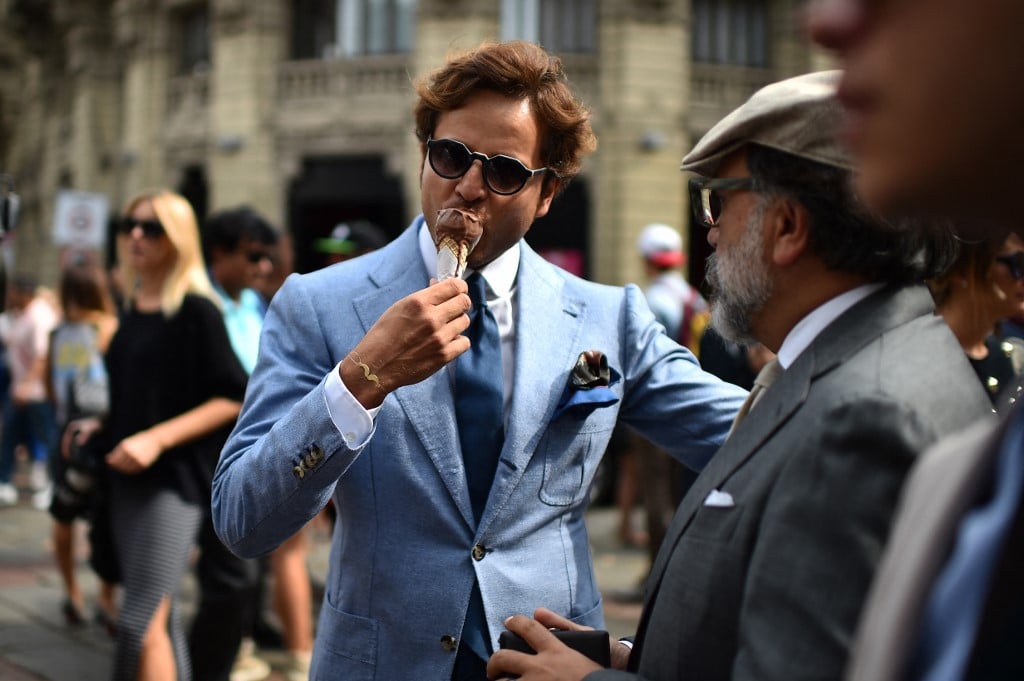No cheese on your secondo
When in Italy, the overwhelming urge to gorge yourself on Parmigiano Reggiano and the country’s other famous cheeses can be difficult to resist. But be careful.
I once sparked bedlam at a food stand in Rome after spooning grated cheese from a dish over a hearty plate of beef stew. A public shaming ensued.
“Ma che cafone!” yelled a stranger pointing at me. Translation: “What an oaf!”
READ ALSO: ‘A rip-off’: Should you really get mad about Italy’s table charge?
What followed was a five-minute exposition of why Parmigiano Reggiano does not go on your secondo – second course – from the stand’s owner and various customers.
Apparently the hard cheese’s famous flavour can easily overwhelm certain dishes and its use should be limited to pasta and risotto – but even then, there are other rules.
No cheese with seafood risotto or pasta
In much the same way you should never put grated cheese on your secondo, you must also never add it to risotto or pasta dishes that are made with seafood.
The general thinking is – much the same as the main course rule above – that the strong cheese flavour will overwhelm the delicate taste of the fish.

Interestingly, most pizzerias still offer cheesy seafood pizzas, which can be eaten without fear of rebuke.
No cappuccino or caffé latte after midday
Nothing makes you look more like a tourist than ordering a long, milky coffee past a certain hour, generally regarded to be midday.
Why is midday the arbitrary cutoff point? Well, cappuccino and caffé latte are generally viewed as breakfast drinks and are considered too voluminous, hence why they can’t be enjoyed immediately before or after lunch.
READ ALSO: Where, when and how to drink coffee like an Italian
After midday, order yourself an espresso – or if you insist on adding milk, make it a caffé macchiato: that’s an espresso topped off with a tiny head of frothed milk.
No hot drinks with food
While we’re on the subject, tea and coffee are never drunk with a meal.
While in the UK you might go into a ‘greasy spoon’ café and get a mug of tea with your fried breakfast, and in America a coffee with your apple pie at the diner is par for the course – in Italy it’s not the done thing. At all. Order them at the end!
READ ALSO: Aperol and aperitivo: A guide to visiting bars and cafes in Italy
Tea drinkers be warned: whenever you order a tea in Italy, it may be served with lemon, but not milk. Italians – like most Europeans – generally find the British fixation with milky tea bizarre.
No walking and eating
Although in some countries the practice of walking and eating is commonplace, in Italy it’s a little bit taboo and almost always wrong. Indeed, the country’s famous slow food culture revolves around sociable sit-down dinners.
Even legendary street foods, such as Sicillian panelle (chickpea fritters) or Roman supplì (deep-fried rice balls) are not eaten on the go – although they can be eaten standing up if a convenient sitting spot can’t be found.
There is one notable exception: gelato. One of the most enjoyable (and socially acceptable) ways to eat Italy’s famous ice-cream is during your evening stroll or passeggiata.

No salad as a starter
In what is a fairly steadfast rule, leafy salads are eaten last in Italy – not as a side dish or starter.
READ ALSO: EXPLAINED: How do you find good Italian food abroad?
Salads are almost exclusively dressed with olive oil and vinegar and their position in last place is because they are thought to cleanse the palate and aid digestion.
One of the few exceptions is a crispy Roman salad of puntarelle, dressed in anchovies and olive oil, which is usually served as a starter.
No colourful foods when ill
Every culture has its own ideas about what to eat when ill.
Some swear by energy drinks, others by chicken soup, and bedouins heal themselves with camel’s milk.
Italians opt for ‘eating white’ or mangiare in bianco, a practice which involves eating bowls of sauce-less spaghetti and white rice.
The idea is that these foods are less challenging for the body to digest. Without taxing your digestion you will have the energy needed to fight off what’s ailing you.
If you want some flavour, you can season the bland dish with olive oil and the rules even permit some Parmesan.
This article was first published in 2016.




 Please whitelist us to continue reading.
Please whitelist us to continue reading.
Member comments